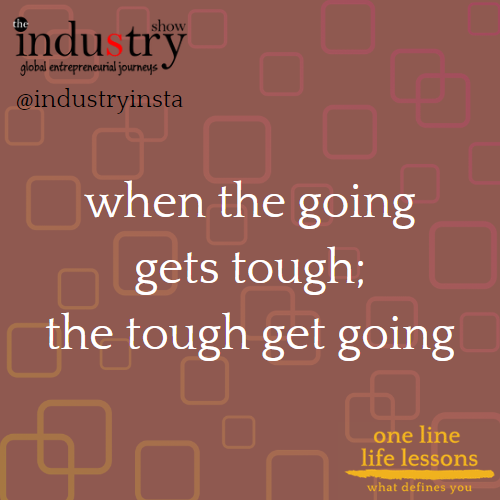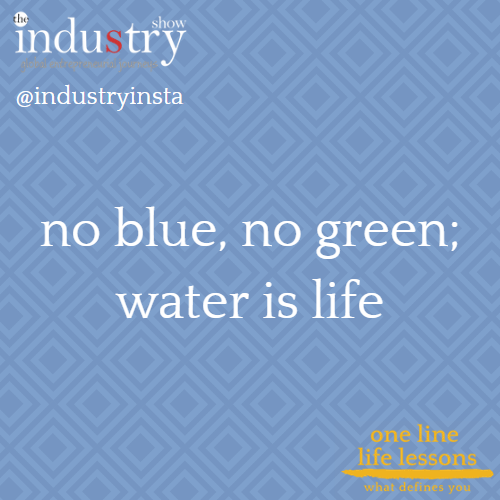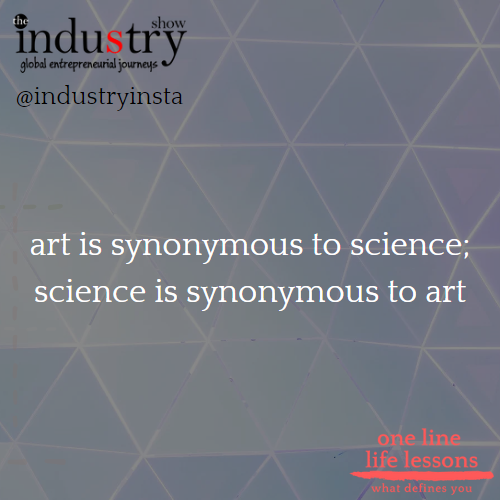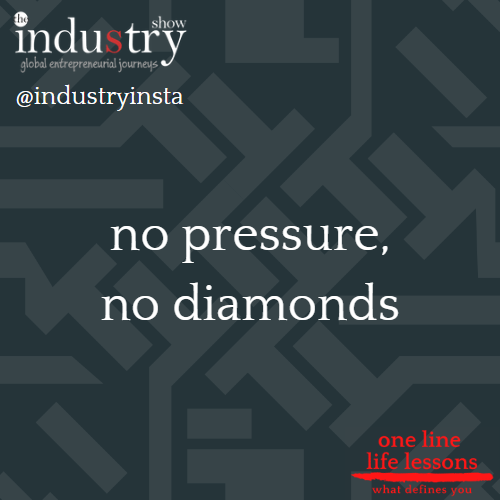May 21, 2023
George Jacob
George Jacob, FRCGS is the President, CEO of BayEcotarium: Climate/Ocean Conservation Living Museum – the largest nonprofit conservation group in San Francisco that oversees 7 institutions including the Aquarium of the Bay. George has spearheaded, influenced design-build assignments at over 108 museums globally including Abu Dhabi, Canada, Dubai, Egypt, Hong Kong, India, Jamaica, Malaysia, Norway, US. He is recognized globally as one of the leading museum thinkers, multi-awardee, and author of 12 bestseller books.
One Line Life Lessons from George





Episode Highlights
- (0:00:00) – Nitin Bajaj welcomes George Jacob to the show(0:00:14) – You run the San Francisco Aquarium and the Sea Lion center
- (0:01:30) – Your work has shaped many places around the world
- (0:04:25) – Getting entitlements and permits for rapid construction of aquarium has been a challenge
- (0:09:07) – Bay Equatorium aims to create climate literacy on a platform that is global
- (0:11:28) – A recent project to build a dinosaur museum in northern Alberta blew expectations sky high
- (0:15:31) – Alberta museum was built in 24 months, on budget and on time
- (0:17:52) – George shares his one line life lessons
Show Transcript
Transcript - Full Episode
Nitin Bajaj: (0:00:00) – Hey, everyone, welcome to the industry show. I’m your host, Nitin Bajaj. And joining me today is George Jacob. George, welcome on the show. Hi, it’s great to have you here. So let’s start with the question. Who is George?
George Jacob: (0:00:22) – George is someone who likes museums, architecture, design, nature, people, communities and everything that we attribute to today.
Nitin Bajaj: (0:00:43) – And you have quite a list of accomplishments and would love to talk more about them. Tell us about the Bay Equatorium. What is it? And more importantly, what’s the size and scale of your work and the operations?
George Jacob: (0:01:00) – Sure. So I run the San Francisco Aquarium and the Sea Lion center, and we have five other divisions focused on our united mission of conserving and protecting the San Francisco Bay. So the oldest branch that we have is called the Bay Institute, which is celebrating its 42nd year as we speak.
Nitin Bajaj: (0:01:28) – Nice. I would love to hear from the work you’ve done, and you’ve done quite a bit, not just around San Francisco, but around the globe. Your impact, your designs, your work has shaped quite a few places around the world. Give me a sense of what I would like to call the impact of the work you have done.
George Jacob: (0:01:56) – So my life and career force has been planning and designing museums and in some cases running them. So I mostly enjoyed the planning and designing part of this career, which is more exciting, which is more fast paced, which is more challenging and contextually and subject wise, radically different from each other. The disciplines have ranged from paleontology to egyptology to science, technology, winemaking, dinosaurs to fish in this case. So every project has been a learning experience. It has taught me many things and in the process, hopefully has made me a better person. And working across cultures, geopolitical boundaries has its own challenges, but also presents tremendous opportunity of growth, self growth. So over the years I have worked in many countries and designed museums in over 14 countries. And most recently I was involved with the creation of a dinosaur museum in Canada. And my present assignment, part of it is of course running baycotarium.org, which is a 501 C three nonprofit. But the other part of my job is more exciting, which is transforming the Smithsonian affiliated aquarium into a world class climate and ocean conservation living ecotarian. So this has many challenges given our location on pier 39, which is on the embarkatory in San Francisco, and it has sensitivity associated with shoreline development. But it is something which is important. Climate literacy is one of those areas which has always taken a backseat. As a result, what happens is that when you go to these climate conferences or ocean conferences, the audience is already evangelized and that vocabulary doesn’t translate to the general masses or the general public. And that’s where there’s a niche and there’s a gap, where climate literacy has a significant role.
Nitin Bajaj: (0:04:25) – George, I am really impressed and have been for the longest time since we’ve known each other, about your humility, about the way in which you approach this whole wide spectrum of industries dynamics, geopolitical and cross cultural aspects and bring them to life, despite all the different challenges you face. So really appreciate you and the work you do and the things you brought to life. I’m very curious to hear, among the many challenges that you face, what is the one big challenge you would like to call out?
George Jacob: (0:05:11) – So I think in the present context, getting entitlements and permits for rapid construction of this comprehensive facility has been a challenge. And like I mentioned previously, partly it is associated with our location. We are on the San Francisco Marketero, which is visited by about 15 million tourists every year. So these are pre Covid numbers, and the numbers post Covid are slowly climbing. And hopefully in the next couple of years, it’ll be back to 15 million or even more. That presents a slew of other challenges. The aquarium’s east side faces the waterfront, and there is a limitation of the physical footprint in terms of its expansion. So to expand the facility or to transform the facility, one has to go vertically up, and that hinders the viewing corridor height limits on that particular location. And then, of course, there is the environmental impact statement that normally can take up to 18 months, if not more. And even after that time period, there could be a number of unresolved issues that can take us back to the drawing board for redesign and reiteration and rethinking of the footprint of the facility. Because we are focused on climate and SDG Goal 13, which is life under the oceans, we would like to create a building that is lead, platinum, or carbon neutral or carbon negative. So those high standards of reducing emissions come with their own challenges. And the overarching challenge on top of that is PO 39 is a confidence of about 300 small and big businesses. And if that corner is turned into a construction zone for an extended period of time, all those businesses will be impacted in some shape or form. So to reduce that impact, our strategy has been to focus on something structurally, which is a prefab. So what that means is that it’s constructed off site, then assembled on site to reduce the time period of execution. So while the execution part, in my mind, is something that we can wrap up in about 24 to 26 months, which is extremely fast for a project that involves live animals. So currently, we hold 24,000 live animals in our tanks. We hold 750,000 gallons of saltwater that we pull from San Francisco Bay and filter. With the new facility, the capacity would go up to 1.2 million or 2 million gallons of saltwater. The number of animals will jump to 30,000. The number of species would jump from 200 to maybe 300 and 3350 species, new species. So every species has its own life support system challenges, its own feeding cycle and supply chain challenges, and so on. So it’s a very complex project. The choreography of moving all these animals into holding tanks while the construction is on, and then moving them back and acclimatizing them back in the tanks, that’s a very complex maneuver. But having studied that intimately, I can still feel confident that it can be executed in 24, 26 months. But the time leading up to the permits prior to us breaking ground, that has been the single most challenge that we faced.
Nitin Bajaj: (0:08:51) – If I can think of anyone who can get this done, and in the time frame you’ve listed out, it is you. So I’m glad that you’re at the helm of this project, and I can’t think of anyone better than you to get this done.
George Jacob: (0:09:06) – Thank you.
Nitin Bajaj: (0:09:07) – On the flip side of challenges come opportunities. What’s the most exciting opportunity that you’re looking at?
George Jacob: (0:09:16) – I think with the Bay Equatorium. This climate project, the opportunity of creating climate literacy on a platform that is global. So the platform is not confined to geographical location. On the embarkator in San Francisco, the footprint is global. And that, combined with AI today presents a fantastic opportunity for spreading subscriptions, extending portals to communities far and wide, and enhancing and accelerating climate literacy using layered AI based learning. So everything from climate curatorship to climate skilling, to SEO based information gathering, extrapolation of data using interface graphics, understanding live data streams, being able to build scenarios, dialing up or dialing down variables associated with climate and carbon emissions. Technology is at our fingertips, and it presents a huge opportunity for this institution to succeed way beyond its geographical footprint. The fact that we are located in the Silicon Valley gives us that extra boost in terms of our ability to work with tech firms.
Nitin Bajaj: (0:10:44) – So true. I love the vision. I also love how you fluidly transition from an architect to a designer, to a visionary, to a technologist. It’s just amazing and lovely to see how you flow between the lanes without skipping a beat. It’s really amazing, and rightly so. You said you’re in the heart of the Silicon Valley. You love these animals, you love art and design. So I can see all of this play out and make you really successful at what you do. That explains a lot.
George Jacob: (0:11:25) – Thank you.
Nitin Bajaj: (0:11:28) – I want to go back in time in your personal or professional life and talk about two scenarios, one in which this blew your own expectations and became a success beyond your imagination. And another example, which did not work out as you had expected was a failure, became a lesson.
George Jacob: (0:11:55) – Well, my most recent project, which is about five, seven years ago, was to build a dinosaur museum up in northern Alberta. So, 400 miles north of Edmonton, there is a fossil bed where a specific species of triceratops was found. And that species is called Pachyranosaurus lacusti. So it is named after a high school math teacher with the last name lacusti who discovered this particular species of triceratops. And the more field research that happened there in terms of digging and fossil finding, the more they discovered that there were more and more fossil remains in that location. And by some estimates, there are about 20,000 animals in that particular location. So it probably would have been a flood or a fast moving river stream that pushed all these animals in their carcasses, one on top of the other, to create sort of a cauldron filled with these fossils. And that makes it the densest fossil bone bed site in the world. So 7% of the world’s dinosaurs are found in Alberta. The county of Grand Prairie decided to create a dinosaur museum in that location, not far from the bone bed site. So the bone bed site is at a location called Pipestone Creek, and the museum is about a mile from that particular location, alongside Alaska highway. So you can see this museum from 17 miles away. It’s the prairies, so it’s flatland, so you can actually see the museum from a great distance. And the museum is designed almost like a dig, like a fossil dig. So you enter from level one, and then you slowly go down multiple levels into the belly of the museum. And when I took on the helm of this project as its founding president, I decided to have a completely different approach of explaining the movement of dinosaurs in that location. And one of the methods in which the exhibition display is carried out in that location is the carnivores are chasing the herbivores almost out of the museum building. So it’s like a giant hunt scene where these animals are actually chasing in sequence. So the gorgosaur, the triceratops, or.
Nitin Bajaj: (0:14:40) – The.
George Jacob: (0:14:40) – Trexes are actually chasing the herbivores down out of the building. The second peculiarity of that location, of that exhibit experience, is that none of the animals are fleshed out. So you actually have to pan your ar visors on top of the articulated skeletals, skeletal installations to actually flush out the animal, look at the habitat. And what makes it even more interesting is that one exhibit actually pounces onto another exhibit. So when you pan your ar visor over one exhibit and pan it onto the next one, you seamlessly transition the movement of the animal from one location to the other. So they’re all interconnected in one giant ecosystem. So that makes the exhibit experience quite special. But the most interesting challenge for me was the timeline of executing this job. And museums take years and years normally to get conceived in people’s minds, to do content development, to do basic research, to translate content into exhibits, and then fabricate those exhibits and then install them in a newly constructed building or newly constructed gallery. So it’s an iterative process that can take years and years. It takes time to put these things together. And there was a just like de France, which is a bicycle tournament, there is a tournament that happens in Alberta called Tour de Alberta, and the opening date was fixed for this particular event, and one had to make this museum happen ahead of this particular bicycling event, which had bicyclists from over 125 countries. So how to create this museum in 24 months was the challenge. And I managed to finish the construction in 13 months. Wow. And everything else, including exhibits, in 32 weeks. So the museum actually was done on budget, which is also a rarity, and on time, several months ahead of the set opening date. The museum went on to win nine awards in nine months and has received five accolades, and it’s the fastest museum ever built in North America.
Nitin Bajaj: (0:17:16) – Wow. That is such an accomplishment. Congratulations again.
George Jacob: (0:17:21) – Thank you. And on the flip side, as you said, there are some projects that have taken. This particular project has taken seven years, and we are not even at 25% mark. So different challenges in different locations. Some are beyond your control, and some actually can leverage the talent that you bring to the table.
Nitin Bajaj: (0:17:45) – That’s amazing. And again, thanks for openly sharing both your successes and the lessons. And on that note, I would like to bring us to my favorite part of the show, which we call the one line life lessons. And I would love for you to share some of your life lessons with us.
George Jacob: (0:18:06) – So, these are one liners. Okay. So the one one liner that I really like is no pressure, no diamonds.
Nitin Bajaj: (0:18:17) – Love it.
George Jacob: (0:18:18) – So the founder of Ikea lives by Nitin Axiom. No pressure, no diamonds. The other one liner that I often think about and often realize it’s quite true in so many ways, is art is synonymous with science and science is synonymous with art. The overlap is far more than differences that it seems to sort of behold. In the popular parlance. The third life lesson is something that I’ve learned from my hero and mentor, Dr. Sylvia Earle, who has dedicated her life to the oceans. And she often says, no blue, no green. If there is no blue in terms of water or the oceans, there cannot be any green on planet Earth. So both are the complementary life forces that keeps us surviving. And another one liner that I often think about is when the going gets tough, tough get going. And that has been a point of inspiration when the chips were down in one context or another. And lastly, it’s a fun one liner that the opposite of stressed is desserts. And I like my chocolates.
Nitin Bajaj: (0:20:12) – I love that. I do like my chocolates too. So 100% with you on that life.
George Jacob: (0:20:19) – Is a box of chocolates.
Nitin Bajaj: (0:20:24) – George, thank you so much for making the time amidst your busy travel schedule and all of the different things you have shifting around. Really appreciate you making the time to be with us and for sharing your journey and your story and more importantly, your life lessons with us. We really appreciate it.
George Jacob: (0:20:45) – Thank you. Nitin, thanks for talking to me.



